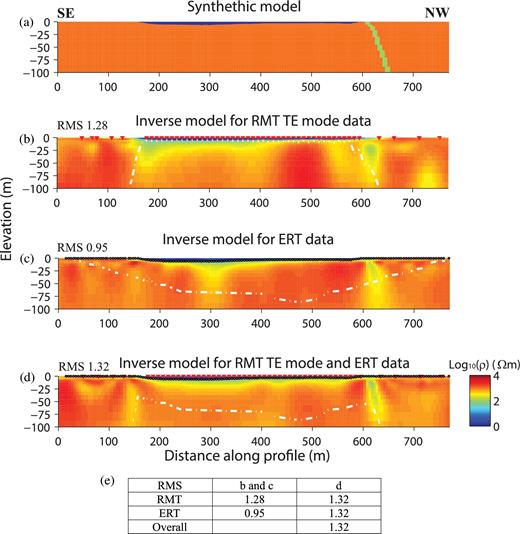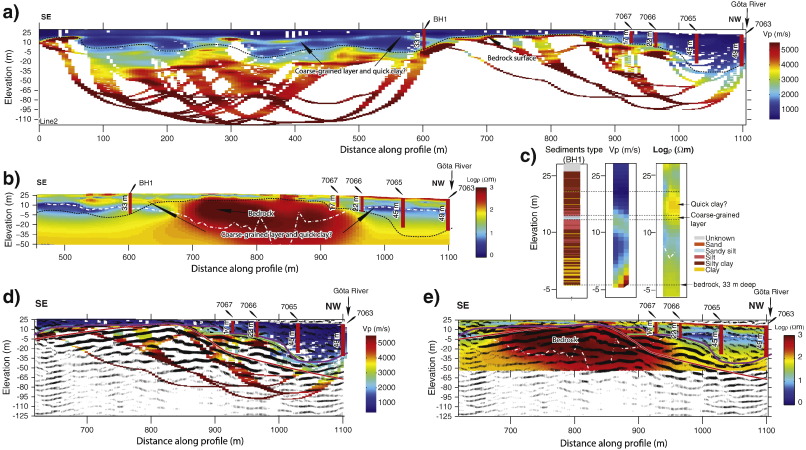Research
A new coast effect in marine MT TM-mode data
At low frequencies, the TM-mode coast effect shows as depressed apparent resistivities and unaltered phase. At high frequencies at sufficient distance from the coast it shows, however, as depressed apparent resistivities and negative phases. TM-mode negative phases are an obvious feature of inductive distortion. Thus, the coast effect in marine MT TM-mode data is a combination of galvanic and inductive distortions.
Using CSAMT and RMT to map fracture zones
Joint utilization of boat-towed radio-magnetotellurics (RMT) and controlled-source audio-magnetotellurics (CSAMT) was tested for the first time at the Äspö Hard Rock Laboratory (HRL) site in south-eastern Sweden to demonstrate acquisition efficiency and improved resolution to model fracture zones along a 600-m-long profile. The 2D joint inversions of RMT and CSAMT data show clear improvement compared with 2D single inversions, especially in imaging uncertain fracture zones.

Joint inversion of boat-towed RMT and lake-floor ERT
The electrical resistivity tomography (ERT) method provides moderately good constraints for both conductive and resistive structures, while the radio-magnetotelluric (RMT) method is well suited to constrain conductive structures. Additionally, RMT and ERT data may have different target coverage and are differently affected by various types of noise. Hence, joint inversion of RMT and ERT data sets may provide a better-constrained model as compared to individual inversions. In this study, joint inversion of boat-towed RMT and lake-floor ERT data has for the first time been formulated and implemented.

Quick clay investigation using RMT and seismic data
Radio-magnetotelluric and seismic methods were used to map potential quick clays in Sweden in order to predict quick-clay landslide. Quick clay often overlies at top of a coarse-grained layer. The former can be delineated by RMT inversion, and the latter can be delineated by seismic tomography. The delineation result is comparable to borehole observations.

